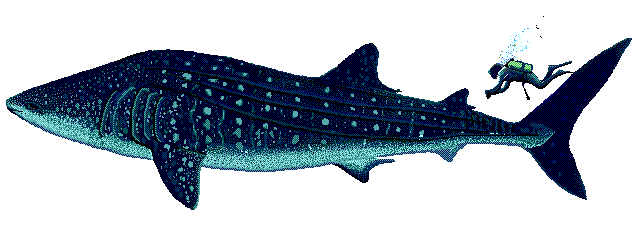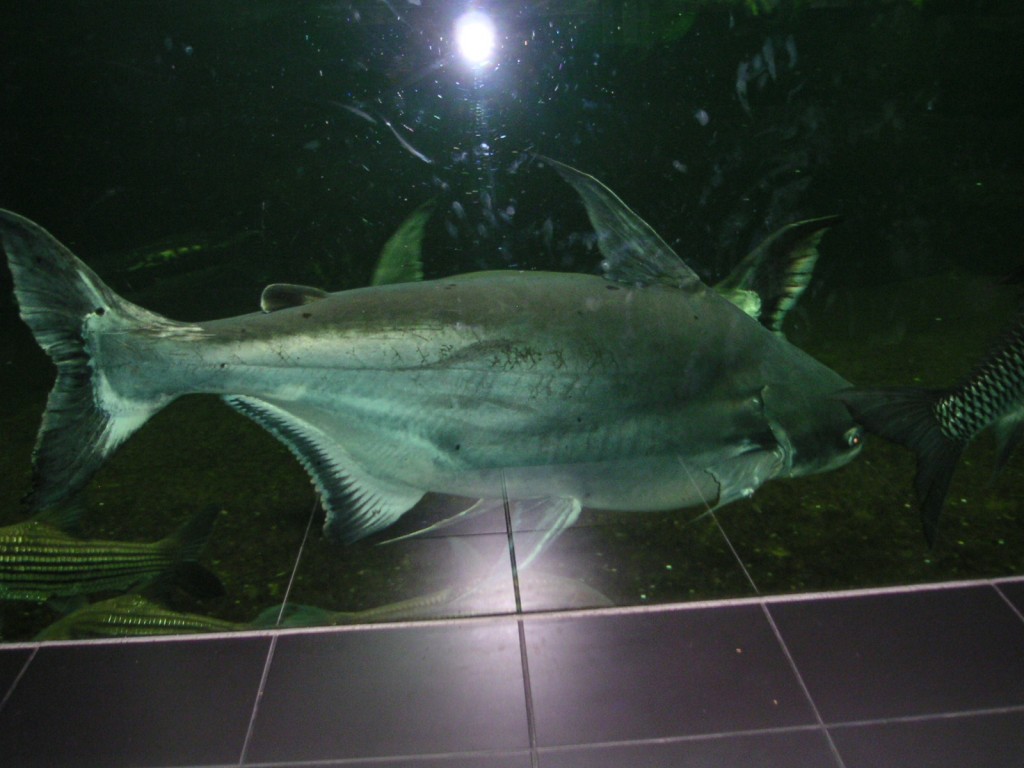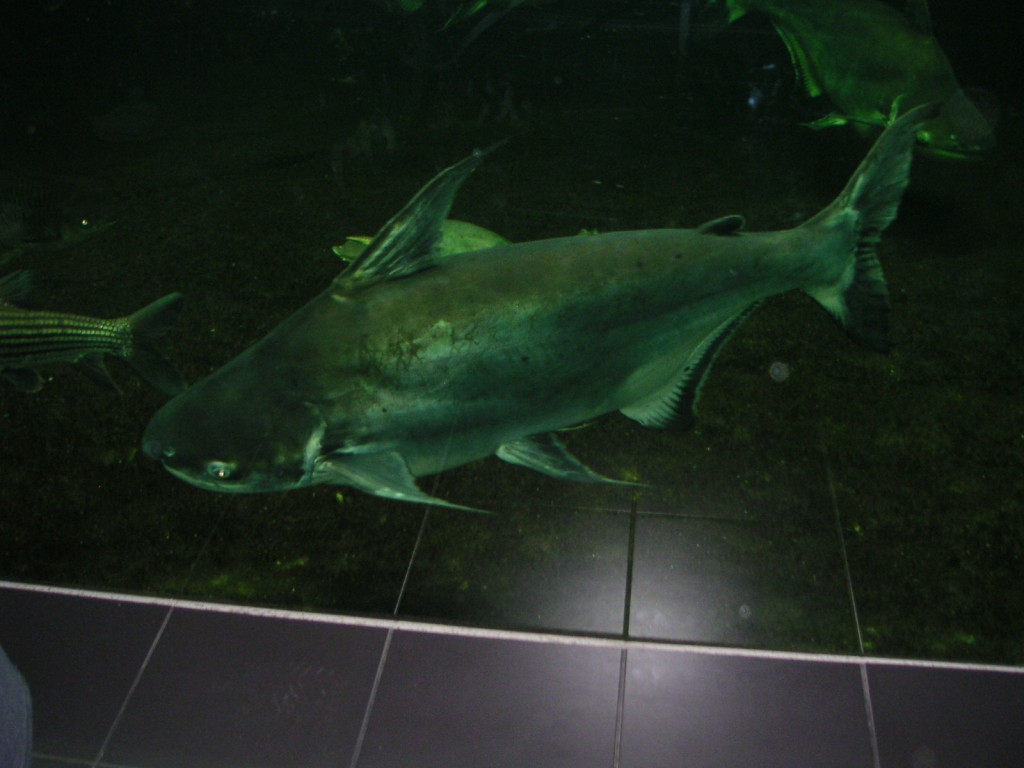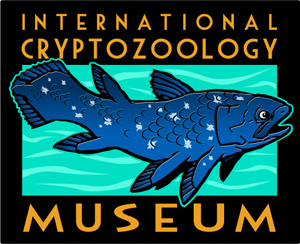Man-Eating Catfish
Posted by: Loren Coleman on September 25th, 2009
A special guest blog from Germany by Markus Felix Bühler, the coauthor of a new cryptofiction book, Der Herr der Tiefe: KryptoFiction:
The giant man-eating reservoir catfish – an example case of an internet monster hoax
The internet is really a great thing, it enables people from nearly everywhere to communicate and to get and share information. But there are also problems with this, because it makes it also possible to circulate faked stories and hoaxes very easily. Every year countless weird stories pop up, often circulating via e-mail. This includes also several stories with a cryptozoology-related background, so I wanted to write about such a case.
In 2007 this circulating Chinese e-mail emerged in the net (here translated):
Each year, a few people will be drowned mysteriously in Huadu’s Furong Reservoir. It was not until recently when the brother of a certain official went swimming in the reservoir with his friend and were drowned that the secret was unravelled!
It’s a 3 metre long man-eating catfish whose head alone is 1 metre wide! After cutting up the catfish people were surprised to find the remains of a man inside!
Because this was a huge incident, and the local government was afraid of the impact on local tourism, they imposed an embargo on the news, but people came away with these pictures taken on their cell phones of the man-eating fish!
Swimming in the reservoir is now forbidden because it is feared another similar man-eating catfish is still lurking in the waters.
Later a similar e-mail emerged completely in english (associated with the above photo):
Subject: It’s Just a Catfish!
For all those crazy guys who go ‘noodling’ for catfish and stick their arms down the fish’s throat!! This would be ‘all the catfish you can eat.’
Each year, a few people were drowning or disappearing mysteriously in Huadu’s Furong Reservoir. It was not until recently, when the son of a government official went swimming, in the reservoir and was drowned, that the secret was revealed.
It is a 3 meter long man-eating catfish whose head alone is 1 meter wide! After cutting up the catfish, people were surprised to find the remains of another man inside!
Swimming in the reservoir is now forbidden because it is feared another similar man-eating catfish is still lurking in the waters.
The photos attached to the e-mail showed a truly huge and massive fish lying on a concrete floor, surounded by several dozen people. Some of the photos show how the giant fish, now lying on its back, is partly skinned and gutted.
Reading the alleged story alone should already spark some critism in one´s mind. But looking at the photos should make it clear, that this is no catfish at all, but a whale shark (Rhyncodon typus). The shape of the body, the structure of the fins, the multiple gill slits, the colouration and the typical ridges on the back should leave no doubt. You can even see the giant liver of the shark lying on the ground, which was interpreted by some to be human remains. Sharks posses huge oily livers as they don´t have air bladders, but they don´t have much similarity in shape and colour to mammal livers, and are often the first you see when you open their body cavity.


Admittedly I have to say that the whale shark with its wide and flat head actually has a vague resemblance to some catfish species, especially to those of the genus Pangasianodon and Pangasius. One of the most famous members of this species is Pangasianodon gigas, the giant Mekong catfish, which is one of the largest freshwater fishes of the world. I has a comparably flat but wide head and small eyes, and their overall body shape is a bit similar to a those of a typical shark, for this reason they are sometimes called shark-catfish or even freshwater sharks.
Furthermore they lack the big barbels which are typical for most catfish, and posses only – similarly to the whale shark – two very small stumpy barbels in the region of the nostrils. The comparably similar body shapes are probably a product of convergent evolution. Whale sharks feed on plancton, as well as Pangasianodon-catfish, which are plantivorous in their youth and later also feed on plants and small animals.
A close relative to the giant mekong catfish, Pangasius sanitwongsei is comparably often present in zoo aquariums. This species can also reach huge sizes for a freshwater fish, and possibly even rivals its cousin Pangasianodon gigas. I had the chance to see some of the Pangasius santiwongsei catfish at the Berlin Aquarium and to make some photos.

The specimen in the photo is about 1,5 m in length, and was the largest of its kind in the tank. You can see the resemblance to the whale shark, but also the differences like the gill slits, the shape and position of the spiny fins, the lacking ridges on the back, the colouration and so on. It is surprising that some people still believe this is a catfish and the whole dumb story is true, even after being told that the fish is a whale shark and the story a hoax.
Of course this whale shark was also neither caught in a freshwater reservoir at Huadu or any other reservoir, nor had it any human remains in the stomach. The whole story is nothing more than a hoax. It has become very popular to take photos of unusual or big animals and add an invented story, like those of the camel spider in Iraq or the alleged crocodile at New Orleans.
Some people wondered why a whale shark, which is an endangered species, would be killed by humans. Sadly whale sharks and many other endangered animals are still hunted for consumption in many regions of Asia, and rare sharks are not excluded from this. Especially the fins of whale sharks are highly valuable, because rich “gourmets” vast sums of money to eat such an exclusive dish like whale shark fin soup. This specimen on the photos was still a very small one, but surely still a big catch for the fishermen.
To make a final remark about this story, I want to give a bit of advice to the readers. I am sure really most if not all of you had identified this fish a whale shark anyway, but it should also be a lesson that a lot of hoaxes and faked stories are circulating in the net. You am always a bit critical, especially when the source of the stories are obscure e-mails.
Sadly even a lot of tabloids make such stuff public. It makes also some sense to read all the comments when you read such a story at a blog or similar location. In many cases somebody has already written the true explanation. If you are not completely sure about the identity of an animal, please take the time and do a bit research for yourself, even if you think you already know it.
The internet enables you to find countless photos within a very short time, you just have to take this time. So take the time, look for photos of the animal you think it could be, but take also the time to compare it with those animals other people have proposed. But don´t just look at overall similarties, look for specific details and typical traits.
To donate to the International Cryptozoology Museum, please, click on the following museum button:
About Loren Coleman
Loren Coleman is one of the world’s leading cryptozoologists, some say “the” leading living cryptozoologist. Certainly, he is acknowledged as the current living American researcher and writer who has most popularized cryptozoology in the late 20th and early 21st centuries.
Starting his fieldwork and investigations in 1960, after traveling and trekking extensively in pursuit of cryptozoological mysteries, Coleman began writing to share his experiences in 1969. An honorary member of Ivan T. Sanderson’s Society for the Investigation of the Unexplained in the 1970s, Coleman has been bestowed with similar honorary memberships of the North Idaho College Cryptozoology Club in 1983, and in subsequent years, that of the British Columbia Scientific Cryptozoology Club, CryptoSafari International, and other international organizations. He was also a Life Member and Benefactor of the International Society of Cryptozoology (now-defunct).
Loren Coleman’s daily blog, as a member of the Cryptomundo Team, served as an ongoing avenue of communication for the ever-growing body of cryptozoo news from 2005 through 2013. He returned as an infrequent contributor beginning Halloween week of 2015.
Coleman is the founder in 2003, and current director of the International Cryptozoology Museum in Portland, Maine.












Thank you guest blogger from Germany! Excellent piece and quite interesting. I like your critical and rational approach to these things. Good work.
You’re right. Taking the time to do research usually doesn’t take more than a few minutes.
This may be a hoax, but there are reports that the Wales Catfish can grow large enough to attck and eat a human. On an episode of “River Monsters”, he hooked two that were as large as hima nd brought them in. Upon trying to release the Wales Catfish they turned on him, and tried to attack. In England and Spain people have been attack, and recieved serious injury from this predatory giant.
Sorry I spelled Wels wrong. It is WELS catfish.
Thank you for the nice comments about my guest blog post!
JMonkey, you should not overestimate the stories about the european wels catfish (Silurus glanis). I have made a lot of reasearch about them in the last years, especially about their maxiumum sizes. I can ensure you that the dangerousness of the wels was highly exagerated in “River Monsters”. I have seen the episode, as well as some of the other ones, and there were really a lot of amazing footage about extraordinairy freshwater fish and a lot of interesting information. But it was also all a bit exagerated. The wels in normally a very placid animal, despite its size. There are nearly no records of any attacks at all. The one which was shown at “River Monsters” was special, because it was most probably a male which defended its brood, but even this is a really exceptional case. Furthermore the teeth of the wels are only very very small, even a pike a make much more damage. Furthermore their size is often highly exagerated. I was very happy to see that they did not used the completely unrealistic and ridiculous sizes which are often mentioned elsewhere, but spoke of a maximum size of about 3m, what seems quite possible, even given the fact that there was no single confirmed specimen which ever reached this size. Most wels in central Europe are not longer than 1,5 m, and even this is a good catch. More than 2 m is already exceptional and very rare. The growth rates given at “River Monsters” were also exagerated, they may be true for younger specimens, but not for older ones. Only in the warm waters of big streams and lakes in southern Europe, where they were introduced, lengths of 2 m and more are comparably common, but an examination of the populations showed that there seems to be a trend that the earliest “colonists” reached the largest sizes, but later generations grow lesser good, as a result of the competition for food within their own species. In very rare cases a wels will reach exceptional lengths of perhaps 2,5 m or even a little bit more, but there are only very few specimens which grow that big. I have seen one which was caught where I live, and which was one of the largest ones ever caught with rod and line in Germany. It was 2,47 m and weighed 89 kg. But even this was hardly able to swallow a human bigger than a baby. I know of two cases in which wels catfish died when they attacked floating footballs on the surface (I know of similar cases with american flathead catfish) and tried to eat them, possibly because they thought the balls were ducks or other waterfowl. They managed it to get the ball in the mouth, but were neither able to swallow them, nor to spit it out, and they suffocated. One of them was 2 m in length, and the ball was not even the size of a real football. This alone should show that a wels is hardly able to swallow a human. Some weeks ago, I read a lot of my old angling magazine, and looked especially for big wels. I found again an article which I remember which showed the heavies confirmed wels ever, which was caught at the italian Po Delta several years ago. It was 152,5 kg in weight and was 2,52 m. An ever longer but lesser heavy one was also caught at the Po, and it was 2,78 m and weighed 144 kg. The weight of wels can vary a lot at the same size, especially as old individuals gain mainly additional weight and not length. But such huge ones are incredibly rare, and furthermore even they would not be able to eat a bigger human, because their stomach is comparably small and short, and they can´t eat very long prey.
But I would prefer it to write anytime an own guest blog about this special topic.
Oh, and I wanted to add: The wels in England (where they were also introduced by man) are only very very small compared to those at continental Europe. This is probably a result of the climate, as its growth is highly dependent from temperature. The english record from 1997 was only a meager wels of 62lb (28.123 kilo’s), and this is already exceptional big for England. So it is hard to imagine that there were any serious injuries caused by english wels.
Hello Sordes! So that is you then!
I know we have locked horns on here before and had some debate, but I really do think you have a lot of good information to share and I mean what I said about this piece. I actually do quite enjoy your comments, and this was a very well thought out article and good additional information in your comment as well. I think you’ve given a very rational and concise analysis. Good stuff.
Anyway, it is good to see your guest blog. Look forward to see more from you in the future.
Hi mystery_man! Thanks for this comment, I hope I will manage it to write some more guest-blogs here in the future. I always enjoy a good debate about such topics, and it is nice to see that here are several people which are really deep into the subject matters. There are a lot of topics I would like to bring to a bigger public, and this is a very good place to do this, especially when it comes to wide-spread misaprehension like the alleged sizes of some animals and their behavior.
Greetings All!
I once saw a man eating catfish near Grafton, IL. That is where the Mississippi River and Illinois Rivers join, and just north of where the Missouri River comes in. There is a large “pool” caused by a lock and dam in Alton. After I saw the man eating catfish, he went on to eat his fries.
If you want to see a man eating catfish, just drop by the local Knights of Columbus council hall any Friday during Lent.